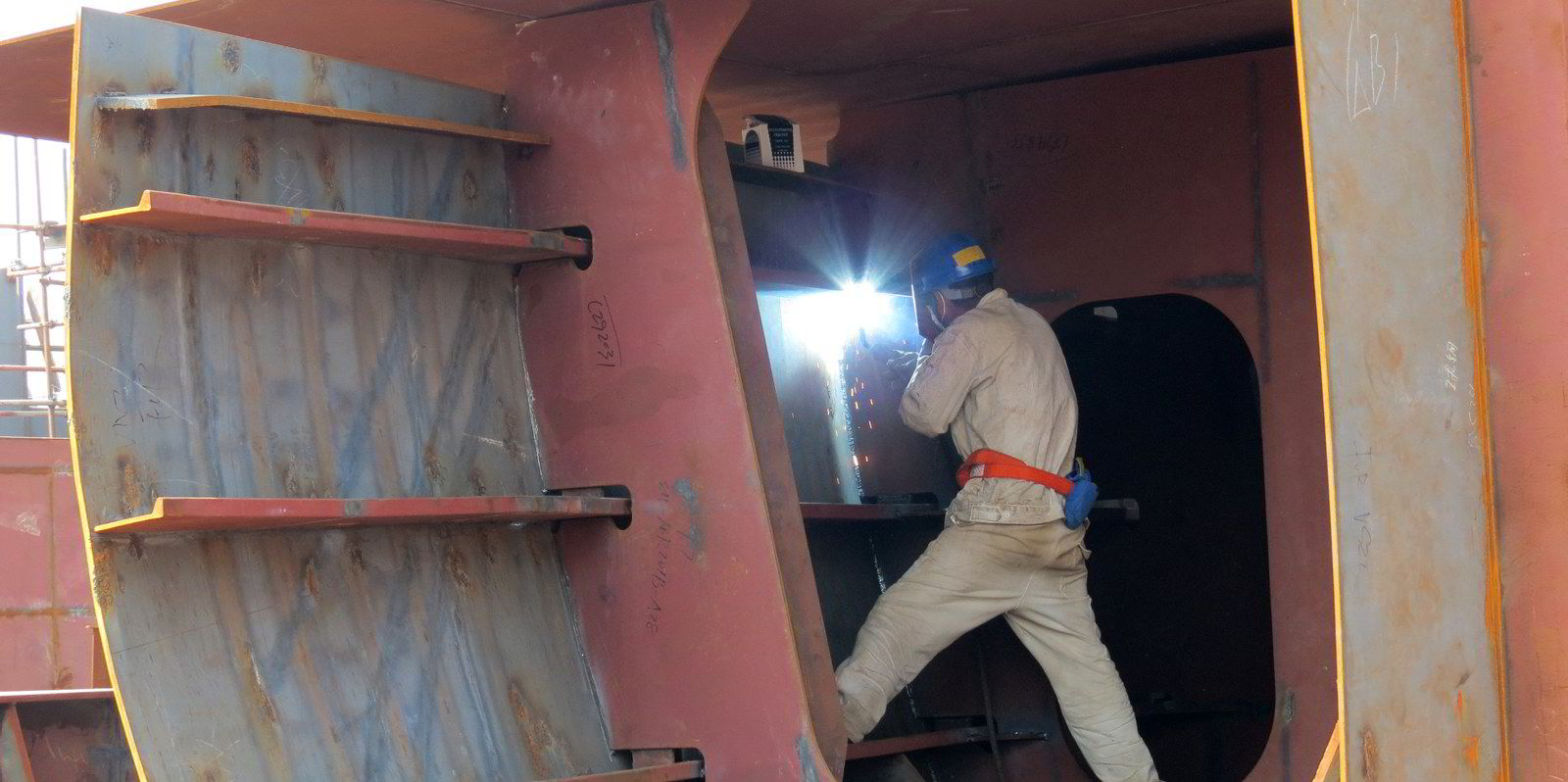The tanker market faces a potential tonnage shortfall over the next four to five years if newbuilding orders do not pick up, a top shipbroker has warned.
The UK’s Gibson Shipbrokers said the tanker fleet is ageing rapidly helped in part by a lack of demolition over the past 12 months.
This has been attributed to a combination of a dramatic improvement in tanker earnings and the gradual exit of predominantly ageing tankers into the dark fleet, destined to trade almost solely Russian barrels.
“Currently, 8% of the fleet over 25,000-dwt is over 20 years of age, with most of these units, particularly on larger sizes already operating outside conventional trades, including storage operations,” said Gibson.
“Another 25% of the total fleet is in the 16-to-20-year bracket, with the proportion of handy, panamax and aframax vessels in this age group being notably higher.”
At the start of this year the tanker orderbook had shrunk to its lowest level in at least two decades due to a number of reasons.
These include the pandemic-driven collapse in tanker demand, sizable increases in asset values and rapidly disappearing near term yard availability, while concerns about long term oil demand and uncertainly about future vessels designs and fuels has prompted owners to hold fast on newbuildings.
Gibson said that while there has been an increase in newbuilding appetite across almost all size groups so far in 2023.
“With aframaxes/LR2s being the best performing asset since the war in Ukraine broke out, it is not surprising that this size group is in the lead, with combined orders for the year to date already at their highest since 2017,” the broker said.
“Investment in new suezmaxes is the highest since 2020, whist MR orders for the year to date are just marginally short of last year’s total.”
Most of the orders are for 2025 delivery, whilst there is a growing volume of tankers for delivery in 2026 or even later, as yard capacity sells out.
“Going forward, yard availability is highly likely to face further constraints amid booming LNG demand, whilst any fresh orders for large bulk carriers could also eat into tanker slots,” Gibson said.
However, the broker said it comes nowhere close to offsetting the number of vessels at or approaching their natural retirement age over the next four to five years.
Gibson said the demand for Russian trade is likely to remain strong, at least in the near term; yet any new sanctions and/or international tonnage safety regulations may potentially make the age profile of vessels in Russian trade a bit younger.
“More importantly, Russian demand is finite and will reach saturation at some point, meaning that the focus will once again shift to demolition, regardless of whether vessels will be exiting Russian or other sanctioned trades, or the mainstream market,” the broker said.
“When scrapping ultimately comes, the tanker industry may well find itself in a similar situation as the oil industry – with not enough tankers to meet existing demand,” Gibson added.





